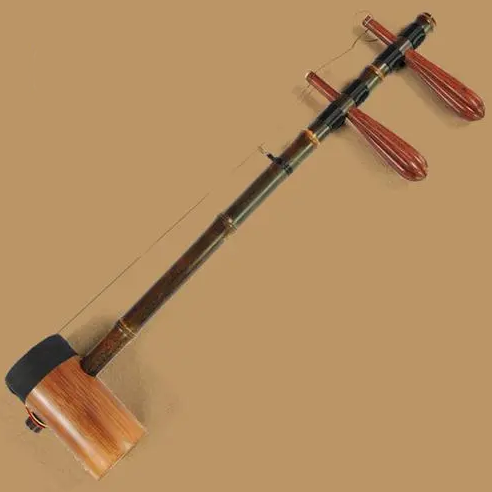Why is Jinghu pulling so hard?
Both Jinghu's own problems and playing method problems can lead to feeling exhausted.

Jinghu itself
It is often said that Jinghu has soft and hard. It's hard to pull up hard Jinghu. However, when the hard Jinghu is pulled, the tone has a metallic sound, it is domineering, and it has the tendency to pierce the clouds and crack the silk. Compared with several ordinary Jinghu, it has the effect of "one bird enters the forest, all birds are muted". Hard Jinghu is generally thicker and firmer in texture.
More specifically, Jinghu's "hardness" may also be affected by the following aspects.
* Thick leather. Good leather should be thick. Because it is thick, the force required to vibrate it will be large. Some masters who make qin joked to the beginners: It's not that they don't give you a good skin, but if they really give you a good skin, you will suffer. This means that beginners do not have the strength to pull.
* The bobbin is thick. In the same way, the thicker the tube, the greater the force required to vibrate it. If the thick tube rang, Jinghu's voice would be much more beautiful than the thin tube.
* There is another reason that many people don't notice. That is, the contact between the bobbin and the burden is not strict, so it takes a lot of force to pull the sound. The reason is similar, if the connection is not strict, the vibration of the drum cannot be effectively transmitted to the burden, and the whole piano cannot resonate, so the drum needs to be vigorously vibrated, so it feels laborious. But in this case, it can be heard that the burden is not vibrating well. There is also a feeling in the hand, the whole piano is not vibrating as a whole. It feels different from the inability to pull due to the first two reasons. This often happens. Because a piano is done, the burden will continue to shrink. Generally speaking, in the dry climate of the north, it takes about five to six years for the burden to completely stabilize. When a qin is just made, the bobbin and the burden are in good contact, but after a period of time, it will not work. The burden shrank. For masters making pianos, there is a way to reserve a way for the package to be reduced in advance.
Rafa of Jinghu
Beginners think that if you pull hard, there will be a loud volume. I would like to say a few more words about this.
Jinghu's bows embody very valuable wisdom. According to my experience, the mechanical mode of bowing in other bowed instruments is to apply pressure to the bow shaft, so that the force is transmitted through the bow shaft to the bow hair and acts on the string. Only Jinghu is different, pulling Jinghu outside the string. It is to use the bow hair to borrow the burden as the fulcrum of the lever, thereby exerting pressure on the string. And to do this, the arm can be very relaxed. This is the wisdom of the predecessors. Therefore, in addition to the material characteristics of Jinghu, Rafa also gives this instrument a very special timbre. Back to the topic of discussion: In other words, Jinghu can be sounded without much force.
It varies from person to person, and often feels the same. Some seniors describe that the strength of playing the qin is to "push" outward. Some people also said, don't loosen the point where the bow hair bites the string.
There is also a folk tradition saying that holding a bow is like holding a brush and sending it inside the cap. . . My own feeling is that only by loosening the arm can I properly grasp the leverage formed when pulling the outer string. When you are relaxed, your arms become sensitive and you can increase or decrease the force at any time as needed.
One thing's for sure: Don't use brute force (as hard as making your arms and wrists stiff), and relaxation is what really pulls the jinghu.
Supplement: There is a common method in Jinghu practice, that is: continuous short bows, increase the speed, and gradually stiffen the arms. But can't stop. This method is generally accepted as a good method for long kung fu. Don't get me wrong this is exercising stress tolerance. This is actually a very smart way, because the arm is too tired, and the human body will automatically adjust to find the most labor-saving way to maintain the bow. It's just that this search is left to the body to complete. This is a very distinctive and effective method of convenience and skill in the basic training of the Peking Opera culture and martial arts field. This shows from an angle that the force of correct bowing must be relaxed in the end.
 渝公网安备 50010702504639号
渝公网安备 50010702504639号